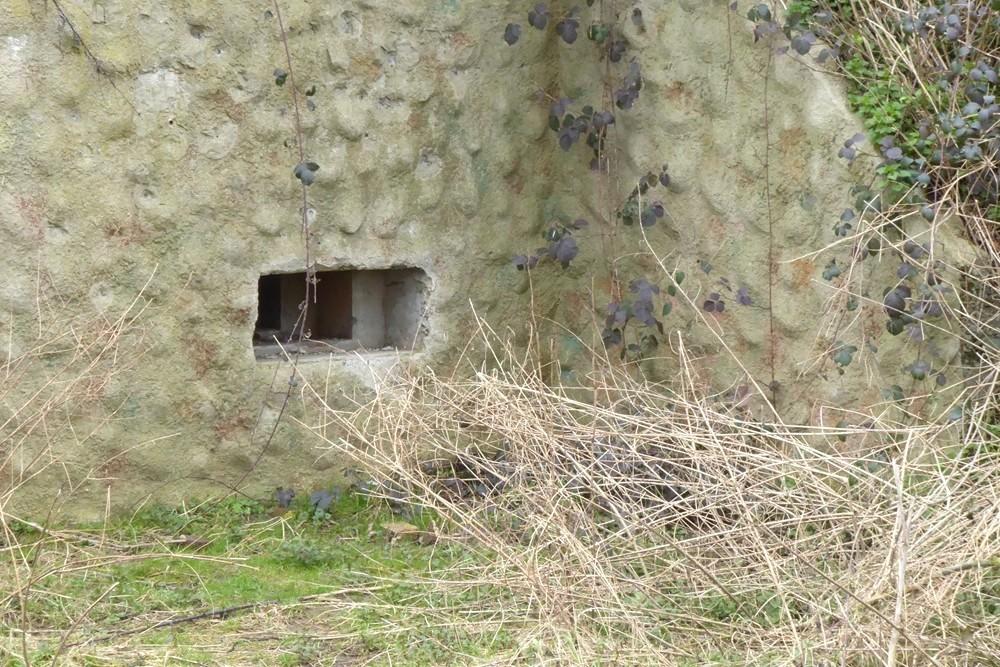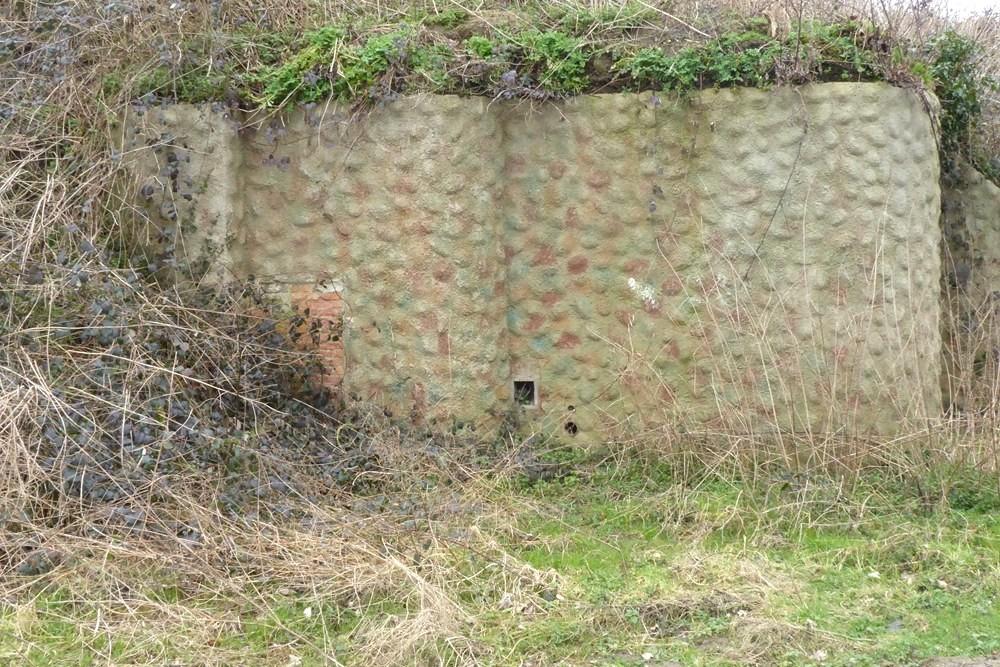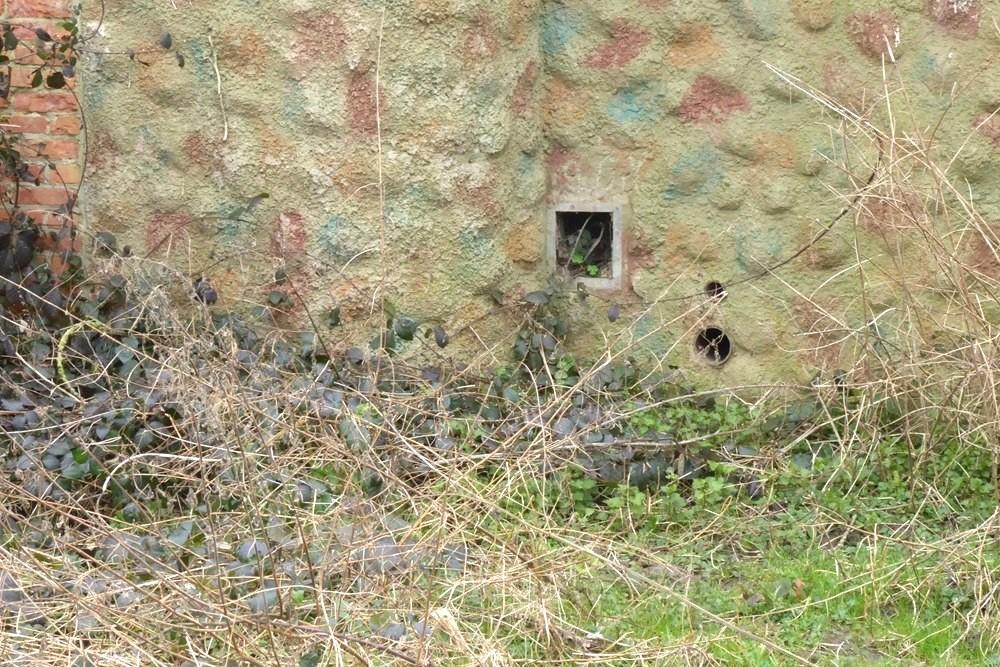Bunker Belt Bruggenhoofd Gent – Rear Line Bunker B42
Belgian bunker, part of the Ghent Bridgehead. This defensive position was constructed between 1934 and 1938, eight kilometres south of Ghent. Its construction was part of the fortification policy that Belgium pursued after the First World War.
The actual bridgehead consisted of two resistance nests – Betsberg and Muntekouter – and three strong points – Semmerzake, Eke and Astene.
The resistance nests and strong points were connected to each other by a curtain consisting of three defence lines.
There were 11 bunkers on the Melle territory, of which 2 have been demolished. Of the remaining ones, several are on private property or are overgrown.
B42 was a bunker on the rear line between Betsberg and the Ostend-Brussels railway line. It was very well hidden in the embankment at the bottom of the same railway line between B41 (910 m) and B43 (55 m). B43 was located at approximately the same height on the other side of the embankment.
The bunker had a rough stone appearance and was painted with red, ochre and emerald green spots on a green background. It had a long protruding wall on the right.
A concrete edge was applied to the roof, a kind of large flower box, so that the soil remained on the roof of the bunker and the vegetation on the embankment could smoothly transition to the roof of the bunker.
The loophole was hidden behind a metal trapdoor.
The bunker consisted of a machine gun room and an access sash. It was equipped as standard for a Maxim machine gun but also for the installation of a Hotchkiss or Colt machine gun.
The bunker is located in the railway embankment along the Boswegel, an unpaved field path between the Kalverhagestraat and the Geerbosstraat.
In 2012, Infrabel cleared the outside of the completely overgrown bunker.
Extensive information about this bunker belt can be found on the site Bunkergordel Bruggenhoofd Gent. It also contains photos, plans and technical data of the bunkers. A map shows the locations per municipality.
Do you have more information about this location? Inform us!
Source
- Text: TracesOfWar
- Photos: Marie-Christine Vinck
Nearby
Museum
Point of interest
- College Paters Jozefieten - Melle (Merelbeke-Melle)
- Institute Mariagaard Kwatrecht - Kwatrecht (Wetteren)
- Halve Maanroute – information board 4, Battle of Gijzenzele - Gijzenzele (Oosterzele)
Monument
- Memorial 5th Line Regiment Kwatrecht - Wetteren
- Memorial Former Students College Melle - Melle (Merelbeke-Melle)
- Commemorative Plate War Victims Gontrode - Gontrode (Merelbeke-Melle)
Cemetery
- Belgian Graves Veterans Gontrode - Gontrode (Merelbeke-Melle)
- Belgian War Grave Gontrode - Gontrode (Merelbeke-Melle)
- Belgian War Graves Wetteren-Kwatrecht - Kwatrecht (Wetteren)
Remembrance Stone
- Stumbling Stone Jacques Eggermontstraat 59 - Ledeberg (Gent)
- Stumbling Stone Monterreystraat 63 - Gent
- Stumbling Stone Hendrik Waelputstraat 11 - Gent








